Category: Uncategorized
-

Terres d'échanges Japan
The series of 12 programs is a voyage of discovery about 24 people, including 12 Quebecers, as well as 12 countries! Argentina, Laos, Haiti, Japan and Sweden feature amongst the intended stop-off points along this international journey, and at the same time these expatriates share their thoughts on Quebec and its inhabitants with us. Watch…
-
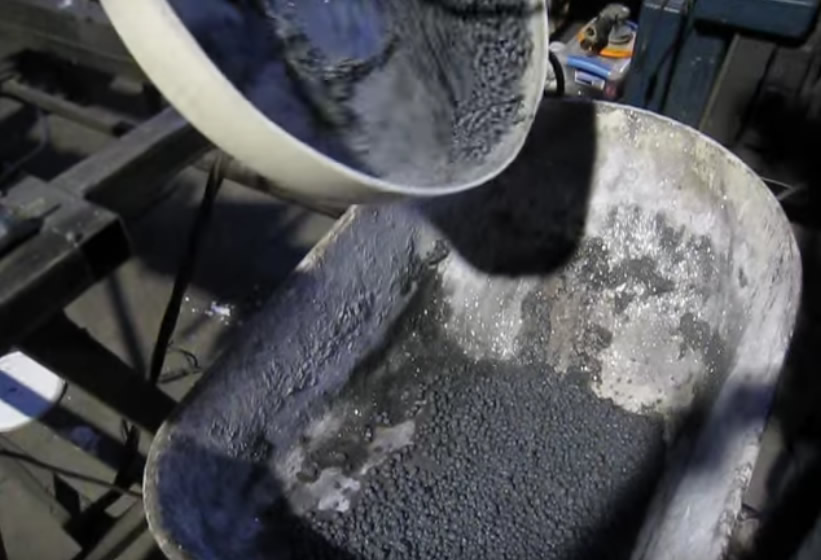
Iron smelting pellet maker
A small scale high-furnace is operated at Les Forges de Montréal. It is supplied with charcoal and iron ore. In order to improve the furnace's efficiency, the ore is prepared into pellets. This ingenious tool facilitates the making of those pellets.
-

Teko-zuke
The teko is the tool — a plain bar — that is used to hold the steel block to be forged. The said block is welded onto one end of the teko. This video shows Manabe Sumihira performing such a forge weld.
-
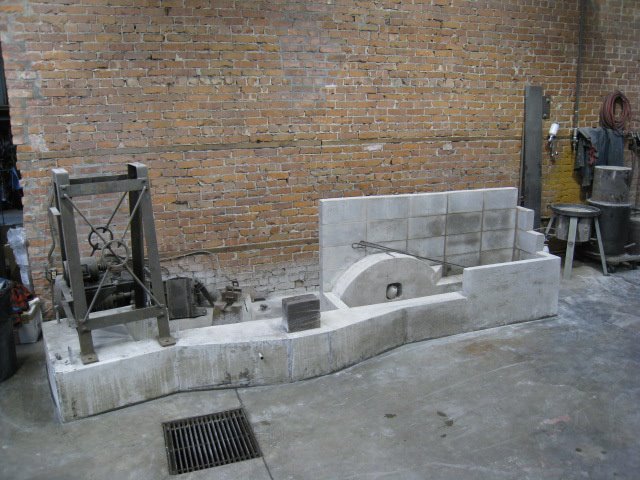
Moving back was hectic. Now what?
Nearly ten years in Japan… If I would’ve known, I probably wouldn’t have done it in the first place! I wouldn’t do it twice, but I’m better off with the cultural heritage I now bear with an equal amount of pain and pride. A book will be required to go through exactly what happened and…
-
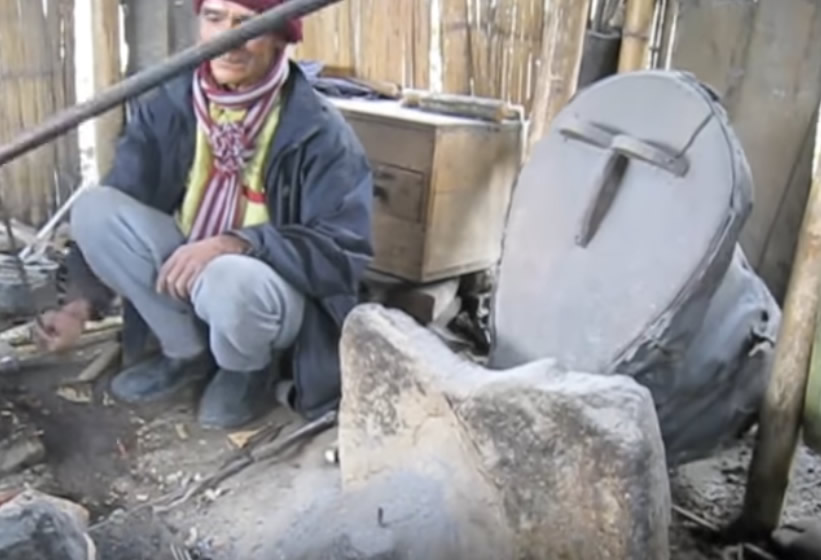
Nepalese village blacksmith
In early April 2011 I had the opportunity to visit a traditional village blacksmith while in the Fikkhal area, Eastern Nepal. In both India and Nepal craftsmen are still considered as the lowest cast and I could see this man lives simply. He was extremely peaceful and very pleasant to be around. He produces mostly…
-

In preparation for tanren
Japanese traditional sword making is bound to the use of certain types of steel which are the product of ancient manufacturing processes. Without the use of such steels, it wouldn’t be traditional japanese sword making anymore. It is not possible to use those steels such as they come from their maker. In the old days…
-
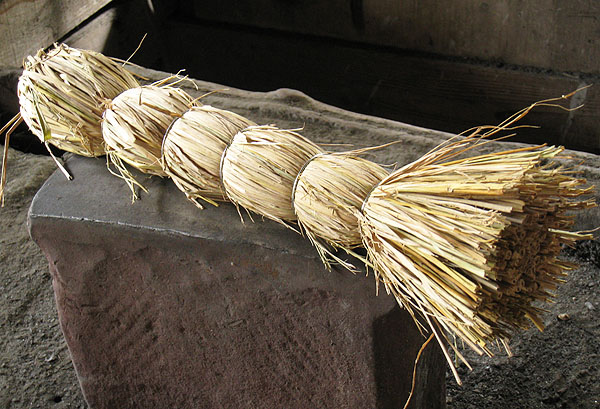
How to make a te-bōki
Useful hand-held straw brush and tool The te-bōki (手箒 lit. “hand-broom”) are extremely useful tools during forging to hold down hot work, brush away scale, push back hot coals, hit apprentices (!), etc. At first sight they look pretty simple, but their making requires a bit of practice so that they become tough and rigid…
-

Making aku – Fabrication d'aku
Aku, or charred straw, is used as a coating when forging traditional steels at very high temperatures in the processes of japanese swordsmithing. The charred straw is both a light source of carbon for the steel, as well as an anti-oxidizing coating when it liquifies near welding temperature.
-
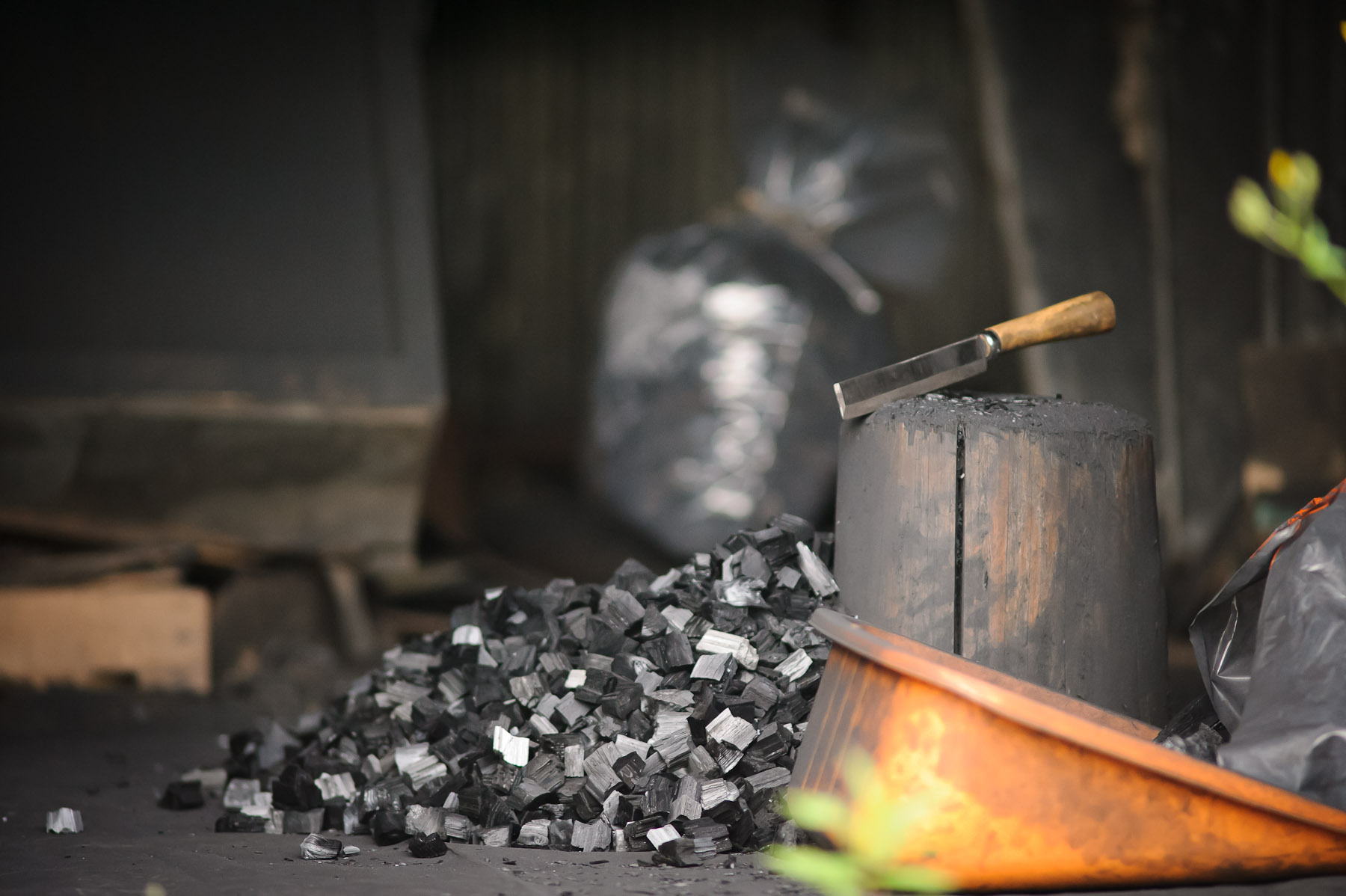
Sumi-kiri san nen…
Sumi-kiri, the elaborate cutting of charcoal by apprentices is said to take three years (san nen) to assimilate. I'm obviously a slow learner for it's been over five years and my charcoal is far from all right. But what's all the fuss?! If you ever tried shoveling gravel, you'll have noticed it's a lot easier…
-
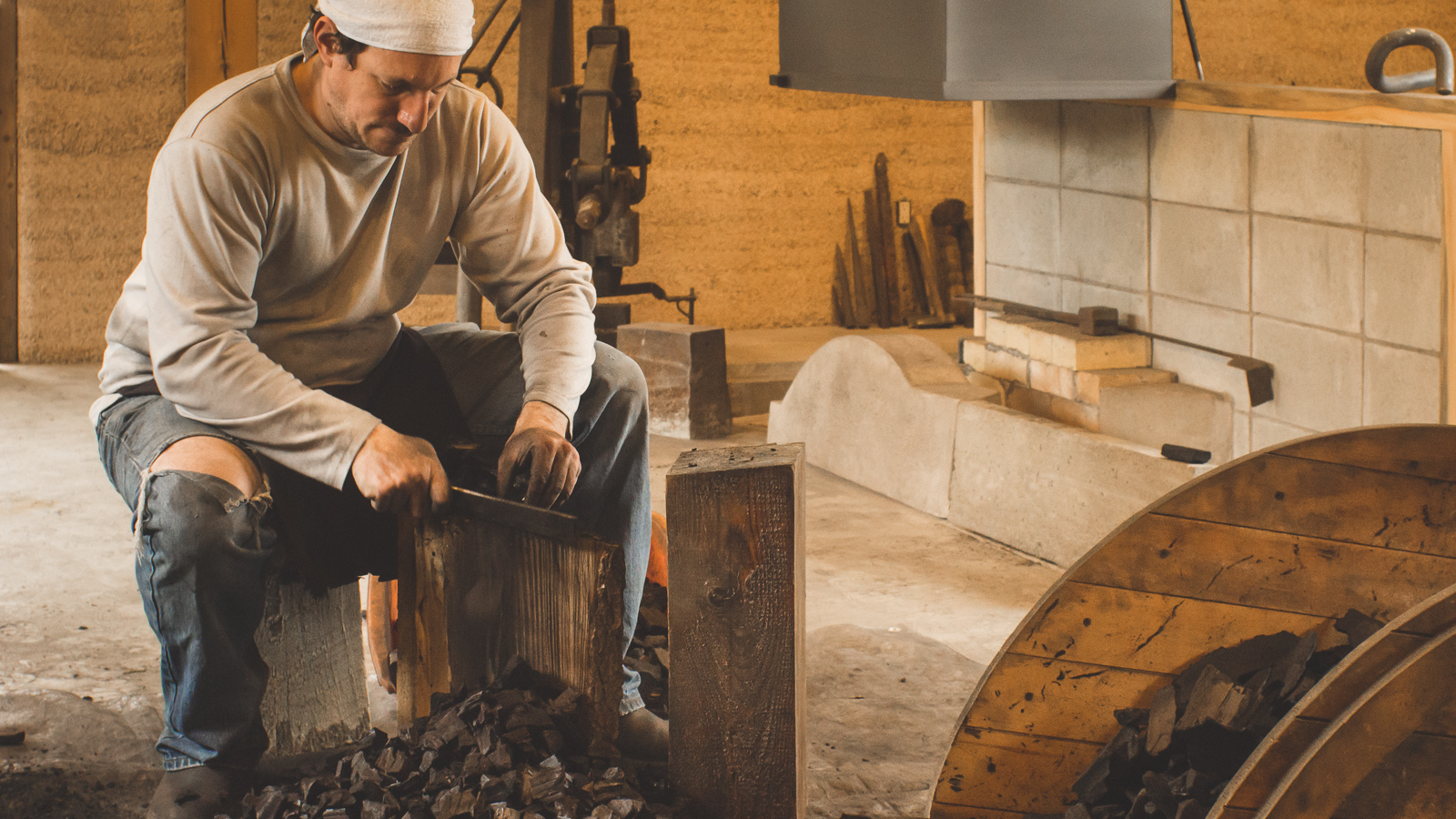
Sumi-kiri – Charcoal cutting
Sumi-kiri, the cutting of the charcoal by japanese swordsmith apprentices, as poorly performed by me. In this video, one strike out of ten is ok, while all others made me frown… size wrong.. size wrong.. swing wrong.. size wrong.. strength wrong.. size wrong.. wrong angle.. and so on. It is said it takes three years…
-

Kata: Making a sword pattern
A good to way to learn proper sword sugata, or silhouette, is to make a kata, or pattern, from 1.25-1.5mm thick sheet of mild steel. I bought a full sheet and cut it in about forty 5 cm wide bands of various lengths. The longest tachi won’t usually exceed 100 cm of zen-nagasa (full length,…
-
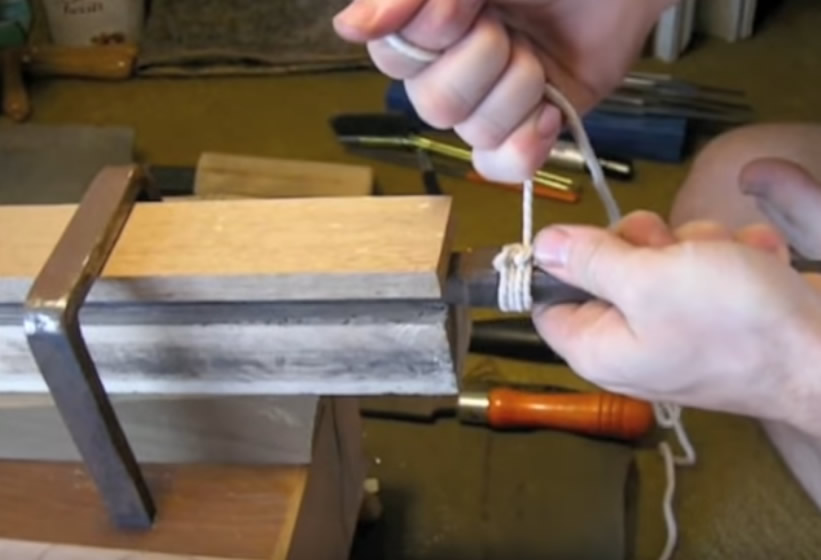
Tool handle wrap
There are several ways to wrap a tool handle, usually with plain rope. I'm presenting one here, used on the teko, the bar used for tanren.
-
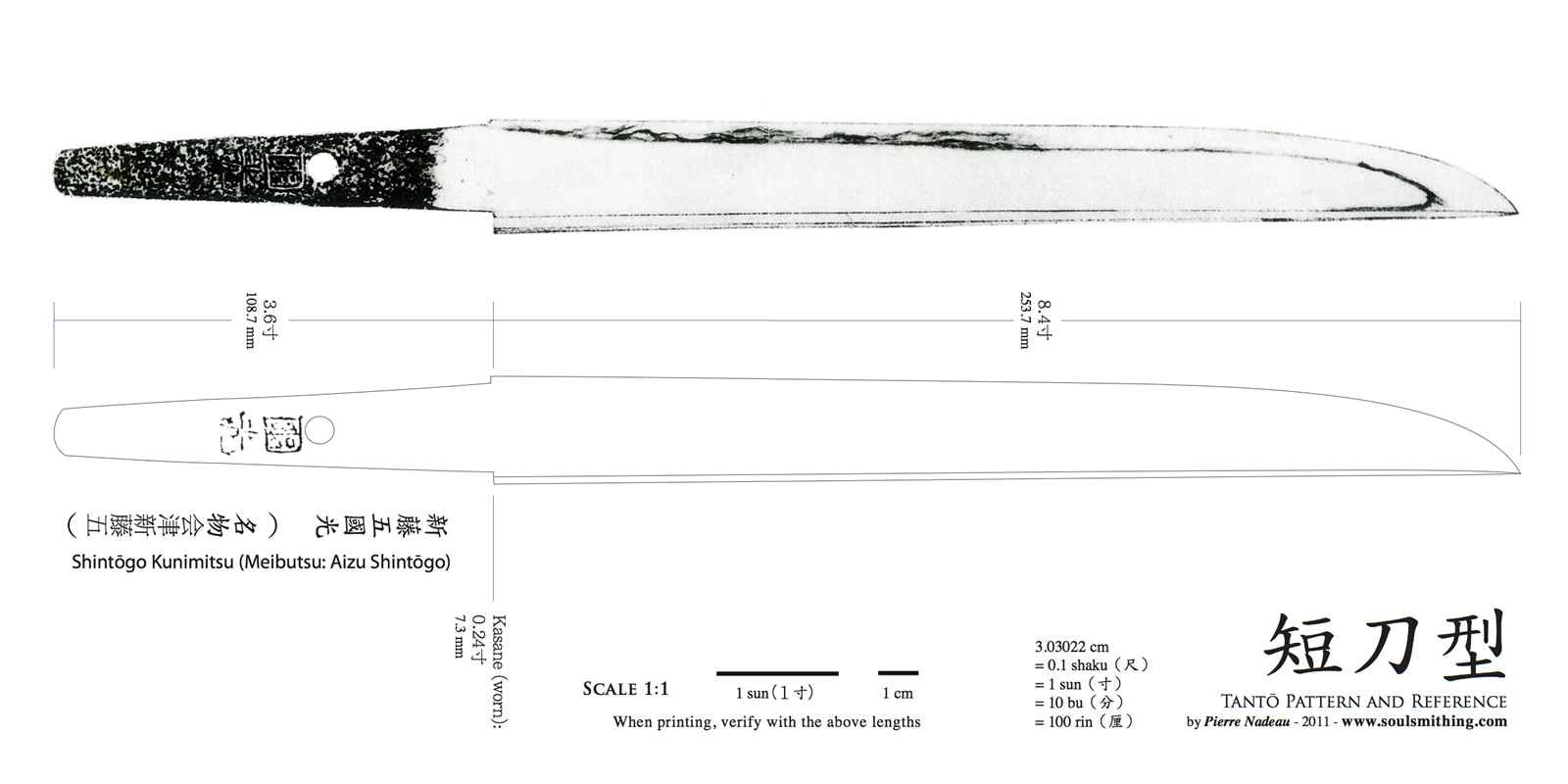
Kata – Sword Patterns: Tanto – Aizu Shintogo
Tanto – Aizu Shintogo Shintogo Kunimitsu is known as one of the best swordsmiths to have ever lived, and a master of the tanto. This is a tracing of the Aizu Shintogo, a tanto listed as a Meibutsu. Download this PDF file which provides detailed measurements of the tanto. (right-click on link and save file)…
-
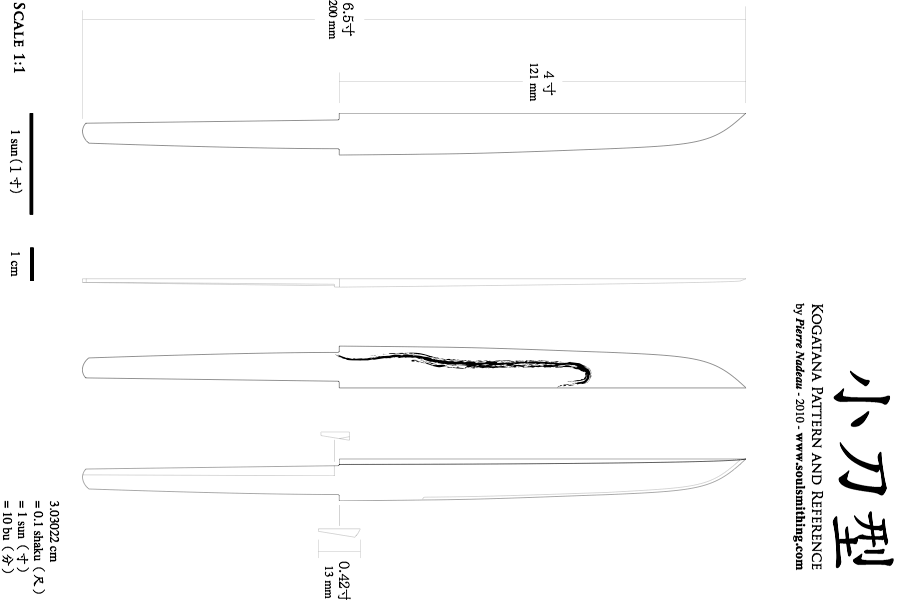
Kata – Sword Patterns: Kozuka – Kogatana
Kozuka – Kogatana These pocket knives were utilitarian first and foremost. They were inserted into a sword scabbard’s side, through the guard. Kozuka (small tsuka) refers to the hilt of the knife, whereas kogatana (small katana) refers to the actual knife itself. Download this PDF file which provides detailed measurements of a classic kogatana. (right-click…
-
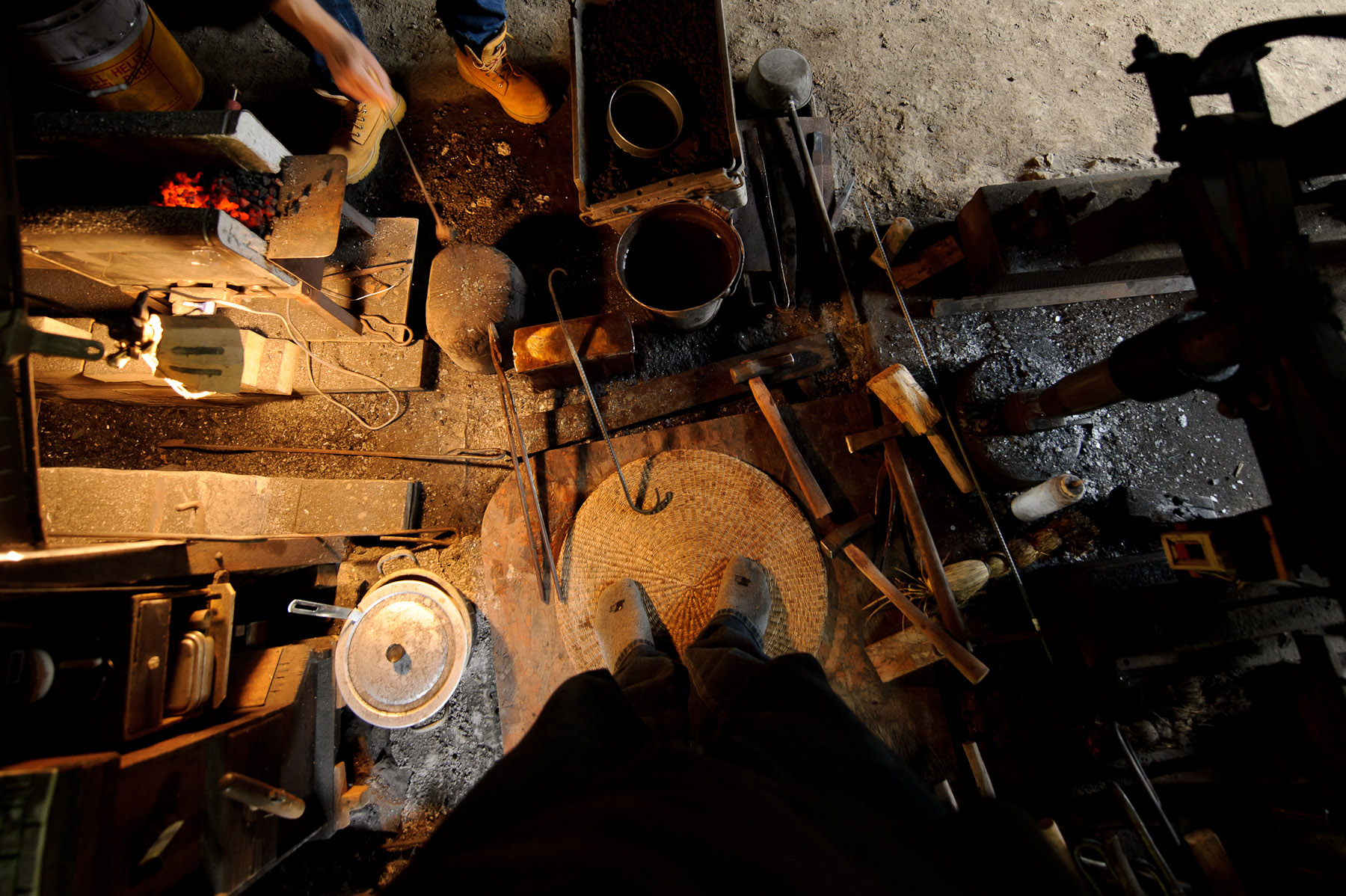
A tour of the forge
Wishing you a truly successful new year! This morning I fought my way out of my futon, and into winter. It was three degrees. Inside. The pipes were frozen. No water. They keep telling me “Aren’t you tough?! It’s much colder in Canada!“. “Yeah, but we have heating in our insulated houses,” I always reply.…